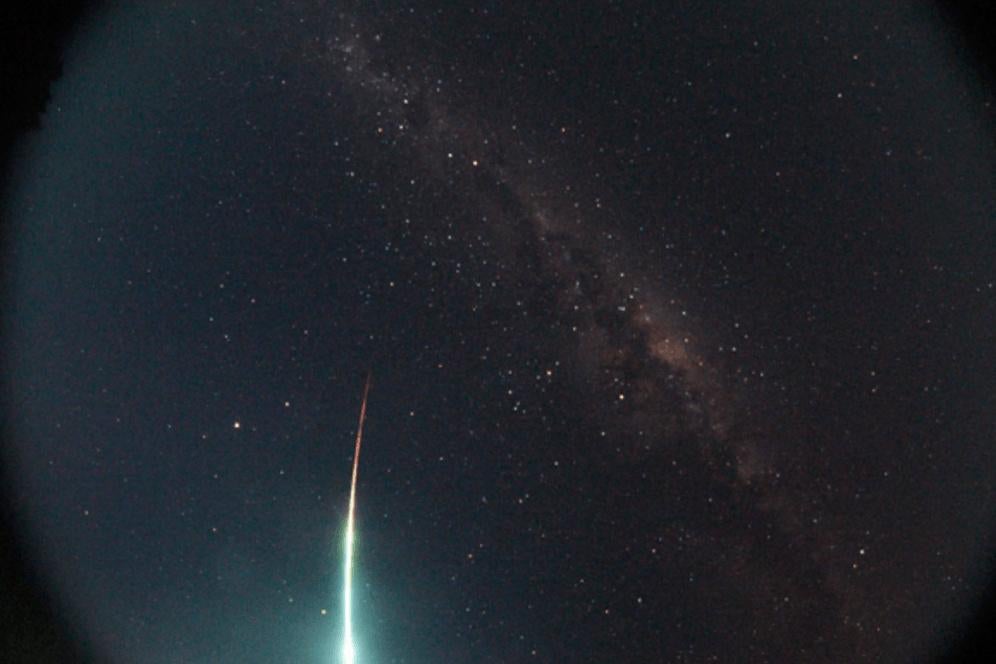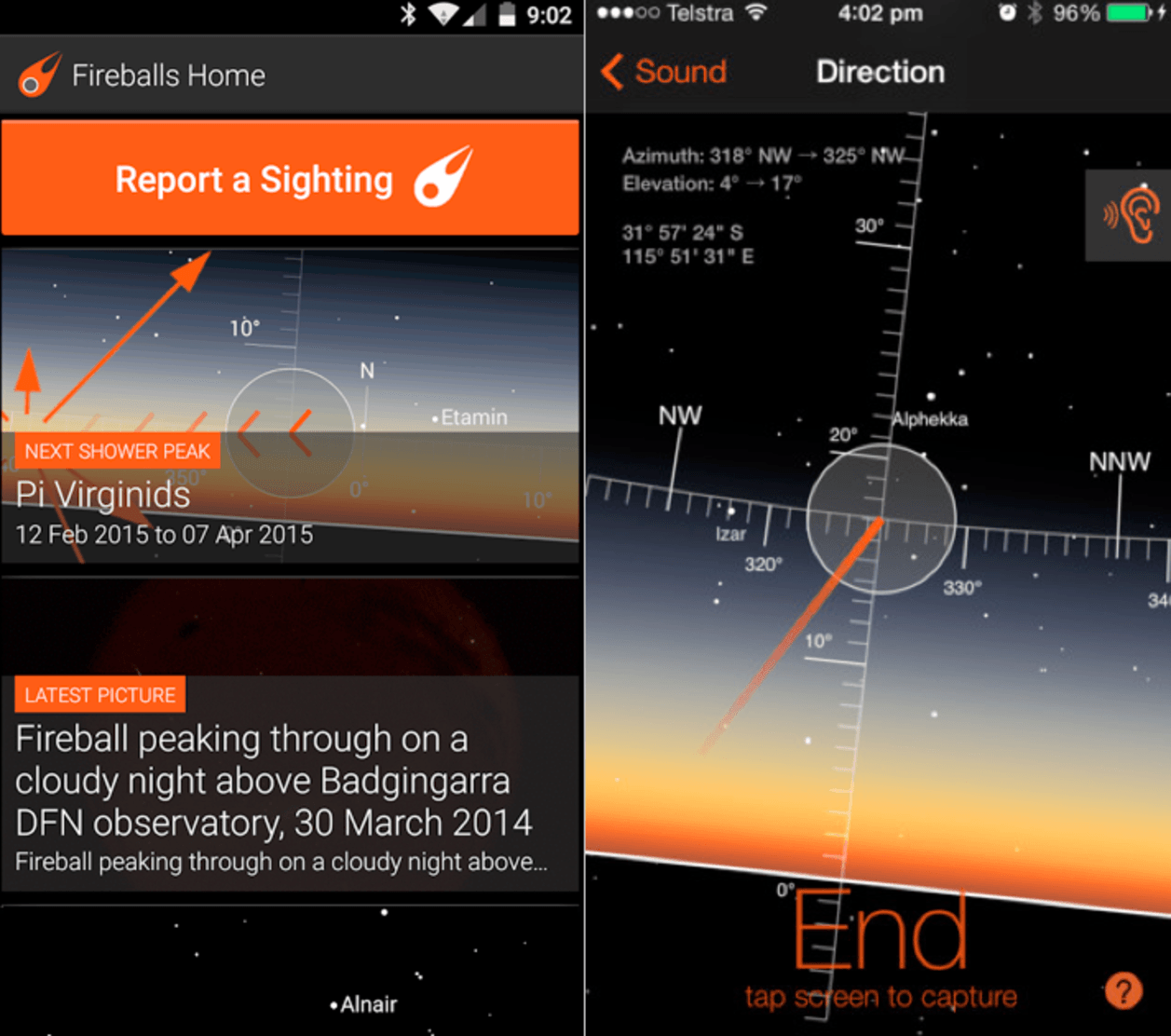Here’s the blueprint for a global fireball observatory – and why we need one
Meteorites crash onto our home planet all the time, with around 50 tonnes of extraterrestrial material entering Earth’s atmosphere each year. Why should we care? Scientists say these rocks contain clues as to how our solar system formed

Your support helps us to tell the story
From reproductive rights to climate change to Big Tech, The Independent is on the ground when the story is developing. Whether it's investigating the financials of Elon Musk's pro-Trump PAC or producing our latest documentary, 'The A Word', which shines a light on the American women fighting for reproductive rights, we know how important it is to parse out the facts from the messaging.
At such a critical moment in US history, we need reporters on the ground. Your donation allows us to keep sending journalists to speak to both sides of the story.
The Independent is trusted by Americans across the entire political spectrum. And unlike many other quality news outlets, we choose not to lock Americans out of our reporting and analysis with paywalls. We believe quality journalism should be available to everyone, paid for by those who can afford it.
Your support makes all the difference.Bright shooting stars are one of nature’s great wonders. Like the one in the main image, which was visible from Devon in the south-west of England in June, these fireballs are caused by space rocks hitting Earth’s atmosphere. The friction forces them to slow down, producing a tremendous amount of heat at the same time. If the rock is big enough, a fragment will survive this fiery transition and fall to Earth as a meteorite.
Planetary scientists study these rocks to extract clues as to how our solar system formed. But this work is complicated by the fact that we don’t know where in the solar system most of Earth’s 50,000 or so meteorites came from.
To improve this situation, you have to determine a new fireball’s orbit once it breaches Earth’s atmosphere. This means observing it from multiple angles. You then ideally want to recover the meteorite before the weather changes the chemistry of the sample – usually in the first shower of rain. A new network of cameras is being set up in the UK to help in this endeavour, phase two of a global network that started five years ago in Australia.
Fireball hunting
Meteorites are arriving from outer space all the time. About 50 tonnes of extraterrestrial material enters Earth’s atmosphere each year. Most are sand-sized particles known as cosmic dust, including the majority of the Perseid meteor shower that took place earlier in August.

But even over a relatively small space like the UK, about 20 meteorites of a searchable size land each year – of which the Devon fireball was a good example. Most are barely 10g, about the size of a six-sided dice. Two or three will be bigger; usually up to a kilogram in mass or the size of a tennis ball.
This is but a remnant of the 6,000 to 20,000 meteorites in the same size range that we see each year in the land mass of the world as a whole. Yet observing and finding these is still no mean feat. To date, only around 30 meteorites have been recovered after their fireball was observed. This has mostly been through remote camera networks including in Canada, France, the Czech Republic, Finland and Australia.
Such networks are continuously imaging the night sky over a huge area, which is ideal for tracking orbits back to space and reaching the landing site fast. I used to work as a researcher for the Desert Fireball Network in Australia. Since it was set up five years ago, its 52 cameras have found four meteorites.
The project to extend the Desert Fireball Network has already seen three high-resolution cameras installed in different parts of England in recent months, along with sophisticated image-processing software. A further seven will be in place by next summer, in a collaboration between Imperial College London, University of Glasgow, the Open University, the Natural History Museum and Curtin University in Perth, Australia.
The new network will track any fast-moving object flying across the skies above the UK, including things like satellites. It will complement an existing network of 30 video cameras called the UK Meteor Observation Network, which is already run by citizen scientists to spot fireballs and smaller meteors. UKMON focuses on capturing images rather than meteorite recovery. The two operations will share data, enhancing one another’s abilities. There are also plans to extend the new network to the US, South America, New Zealand and Saharan Africa in the next few years.
The challenges facing the UK operation are quite different to those in Australia. Where the Australian network needs to be able to survive unattended in the brutal desert heat, the UK cameras will work in a distinctly colder, wetter climate.
They will have to contend with light pollution, unpredictable weather and significant cloud cover, reducing the number of nights they will be able to take images. But most problematic of all is the ground itself. The Australian outback is ideal for meteorite hunting: uniformly red and with very little vegetation, meaning you can spot a little black rock from several hundred metres. By contrast, the UK’s lush vegetation and woodland can easily camouflage meteorites.
Yet the UK network also has advantages. Most cameras will be within a day’s drive and connected to the internet to provide instant warnings when a camera needs some tender loving care – the Australian cameras tend to be on rougher terrain that takes longer to reach and many are not internet-connected. At the same time, the UK population density is such that quite a lot of people are likely to spot a large fireball and take pictures on their smartphones.
Apps upside your head
Unlocking the assistance of these 65m independent autonomous observatories in the UK is part of the project. The Australian fireball team has developed an app in conjunction with US software consultancy ThoughtWorks. Known as Fireballs in the Sky and free for Apple and Android phones alike, it allows anyone to become a citizen scientist. Users can report any fireball, as well as getting details of the next big meteor shower and where in the sky to look for it – and here’s a grab of what it looks like.

The app is already up and running. In fact, the latest recovered meteorite in Australia, called Dingle Dell, was initially observed by a citizen scientist using it.
This made it possible to find the pristine meteorite before delicate minerals inside it were irreparably altered or washed away by rain, revealing extraterrestrial salts formed early in the solar system that usually quickly disappear on the surface of Earth. These could potentially tell us things about the origins of life and water on our planet.
These kinds of exciting discoveries give a taste of why it will be a race against time to recover the first meteorite tracked by the UK network. So do we have any volunteers?
Luke Daly is a research associate at School of Geographical and Earth Sciences, University of Glasgow; Gareth Collins is a reader in planetary science at Imperial College London; Martin Suttle is aresearcher in meteoritics and planetary science at Imperial College London. This article was originally published on The Conversation (www.theconversation.com)
Subscribe to Independent Premium to bookmark this article
Want to bookmark your favourite articles and stories to read or reference later? Start your Independent Premium subscription today.
Join our commenting forum
Join thought-provoking conversations, follow other Independent readers and see their replies
Comments